When describing graphs or points in , we commonly use some type of coordinate system. The coordinates that you’re probably most comfortable with are standard two-dimensional coordinates, also called the Cartesian coordinate system on the plane.
In Cartesian coordinates, we describe a point using an -coordinate and a -coordinate. We write a point as , where the -coordinate describes the horizontal displacement of the point, and the -coordinate describes the vertical displacement of the point.
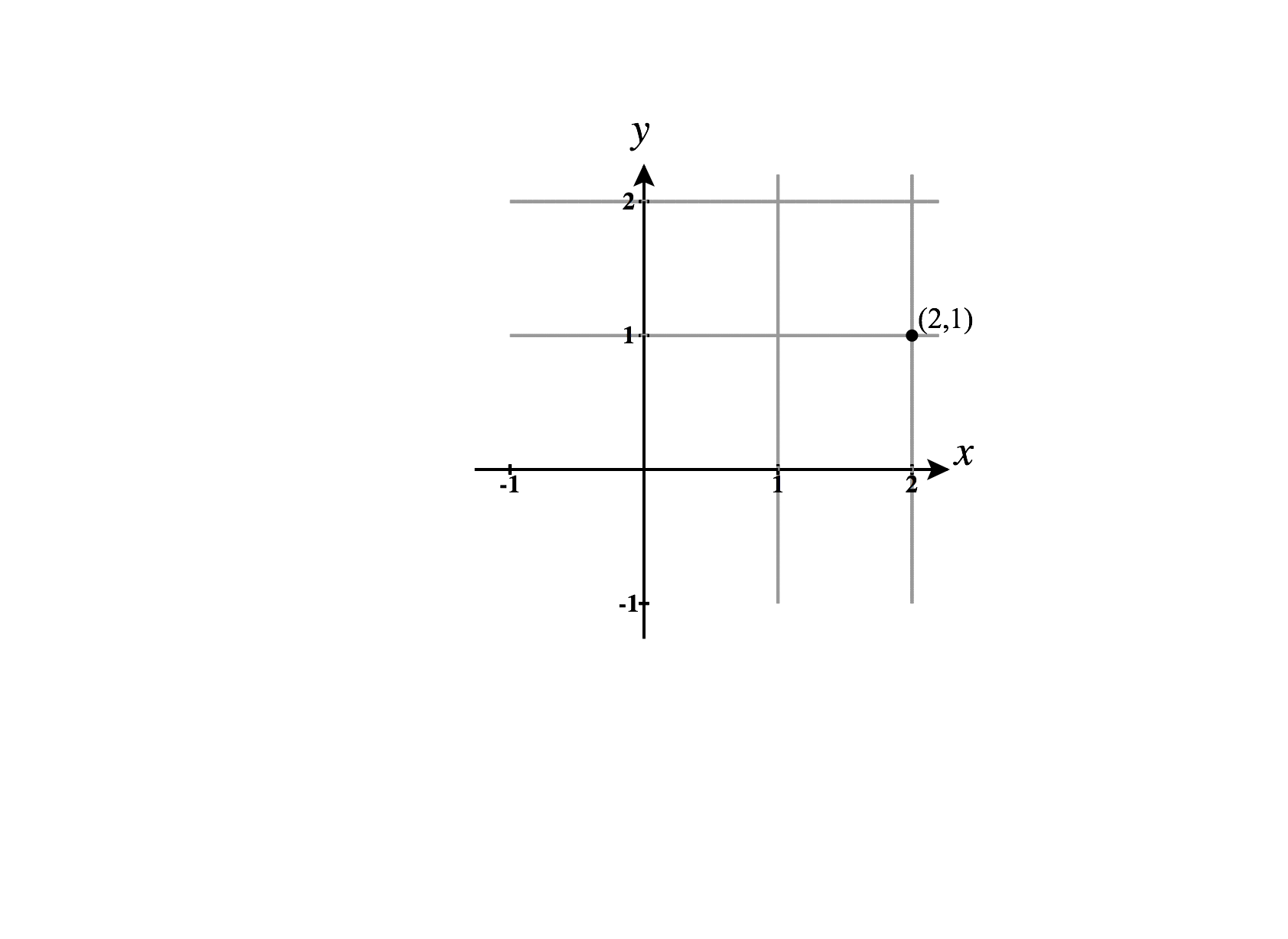
Polar coordinates
You’ve probably also worked with polar coordinates in .
In polar coordinates, we describe a point with an -coordinate and a -coordinate. The coordinate gives the distance between the point and the origin, and the -coordinate gives the angle (in radians) between the positive -axis and the segment connecting the origin and the point.
We can switch between cartesian and polar coordinates using the equations
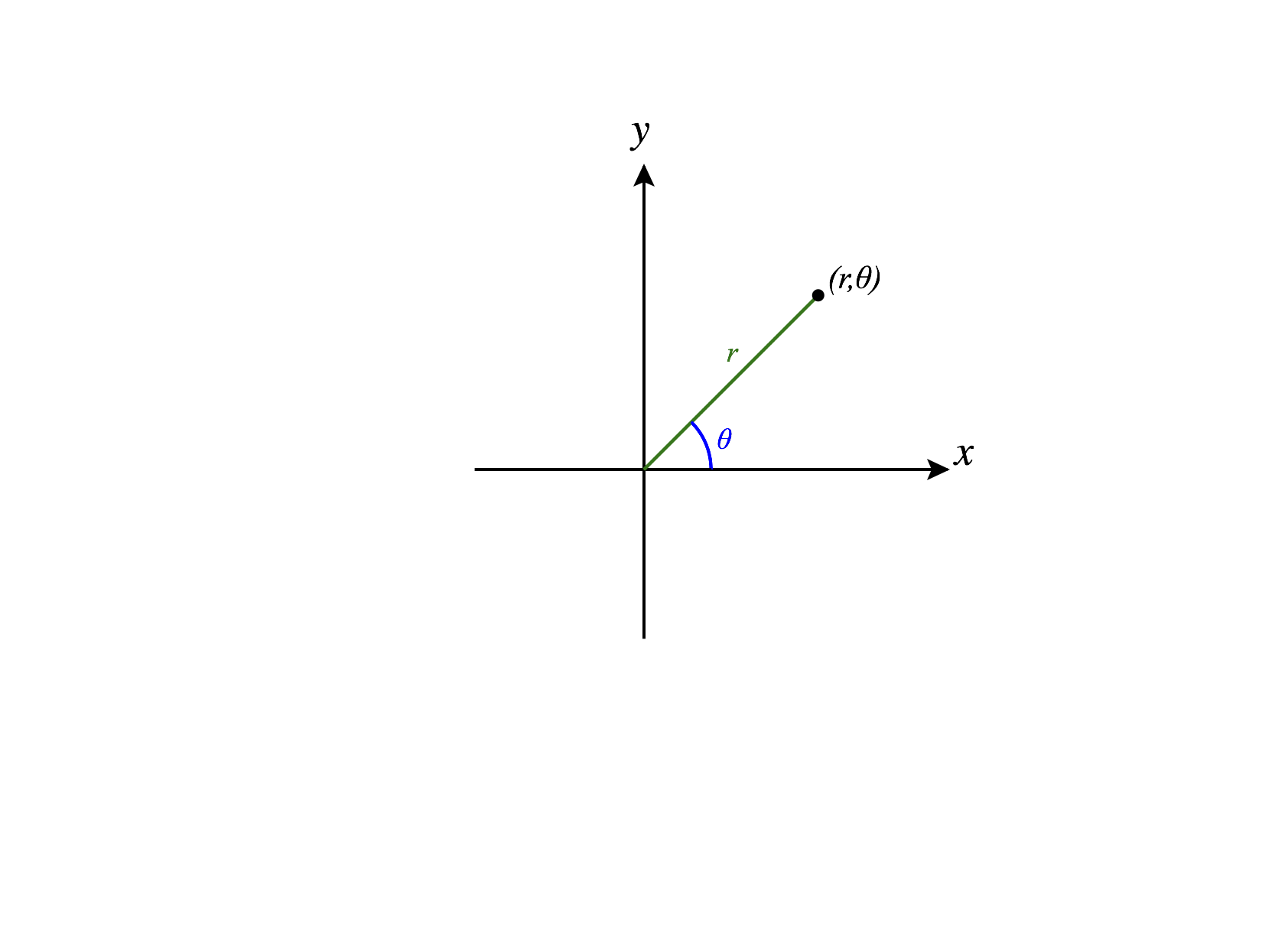
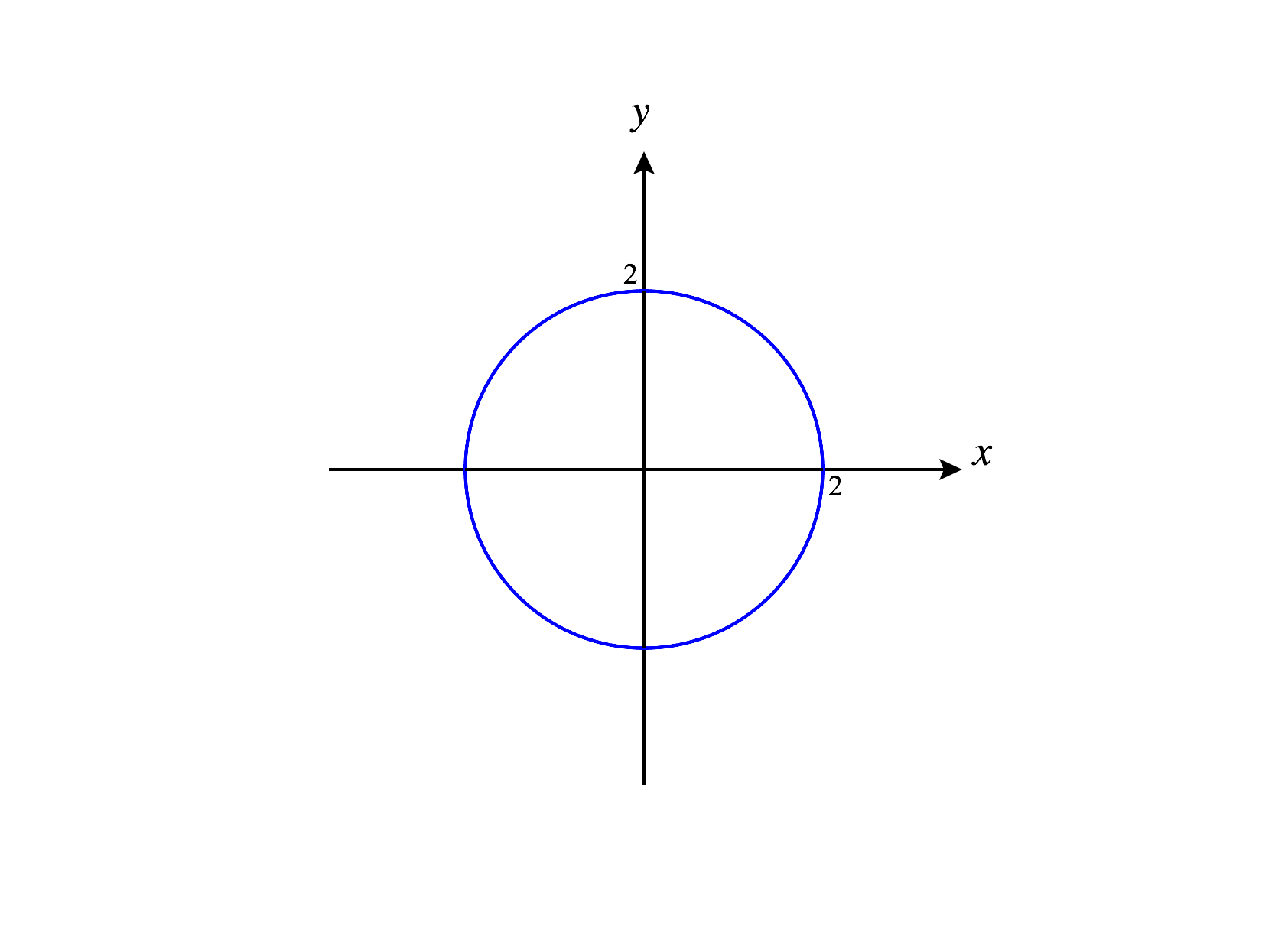
We would like to write describe this circle using polar coordinates.
By definition, the circle of radius centered at the origin consists of the points which are distance from the origin. Because of this, for the polar coordinates of any point on the circle, we have There are points on the circle making every possible angle with the positive -axis, so we don’t need any restrictions on . If, however, we only wanted part of the circle, we would accomplish this by restricting . For example, to get the top half of the circle, we would make the restriction .
Thus, in polar coordinates, the circle of radius centered at the origin can be described as the set of points such that
There’s an important difference between Cartesian coordinates and polar coordinates: Cartesian coordinates are unique, while polar coordinates are not. This means that, given a point in the plane, there’s only one way to describe this point as using Cartesian coordinates. However, there are many ways to write the point as , using polar coordinates.
Take, for example, the point , written in Cartesian coordinates.

This point is on the -axis and is distance from the origin. Thus, perhaps the most obvious way to represent this point in polar coordinates is as (coincidentally, the same as in Cartesian coordinates). But we could also describe the angle as , , , etc. So, we could also write the point in polar coordinates as , and so on.
Perhaps more surprisingly, we can describe this point as . Imagine making an angle of with the positive -axis (so we’re on the negative -axis), then going backwards past the origin. This also gets you to our point. Using equivalent angles, we can also represent the point as , , and so on.
There are some times in working with polar coordinates when we would like to be able to represent points uniquely, and in these situations, we often make restrictions However, even with these restrictions, there still is a point that has multiple representations! Namely, the origin can be written as for any angle .
Depending on the situation and context, different people may use different restrictions or conventions for their ranges for and . For this reason, it’s good to specify what values you’re allowing, to avoid being misunderstood!
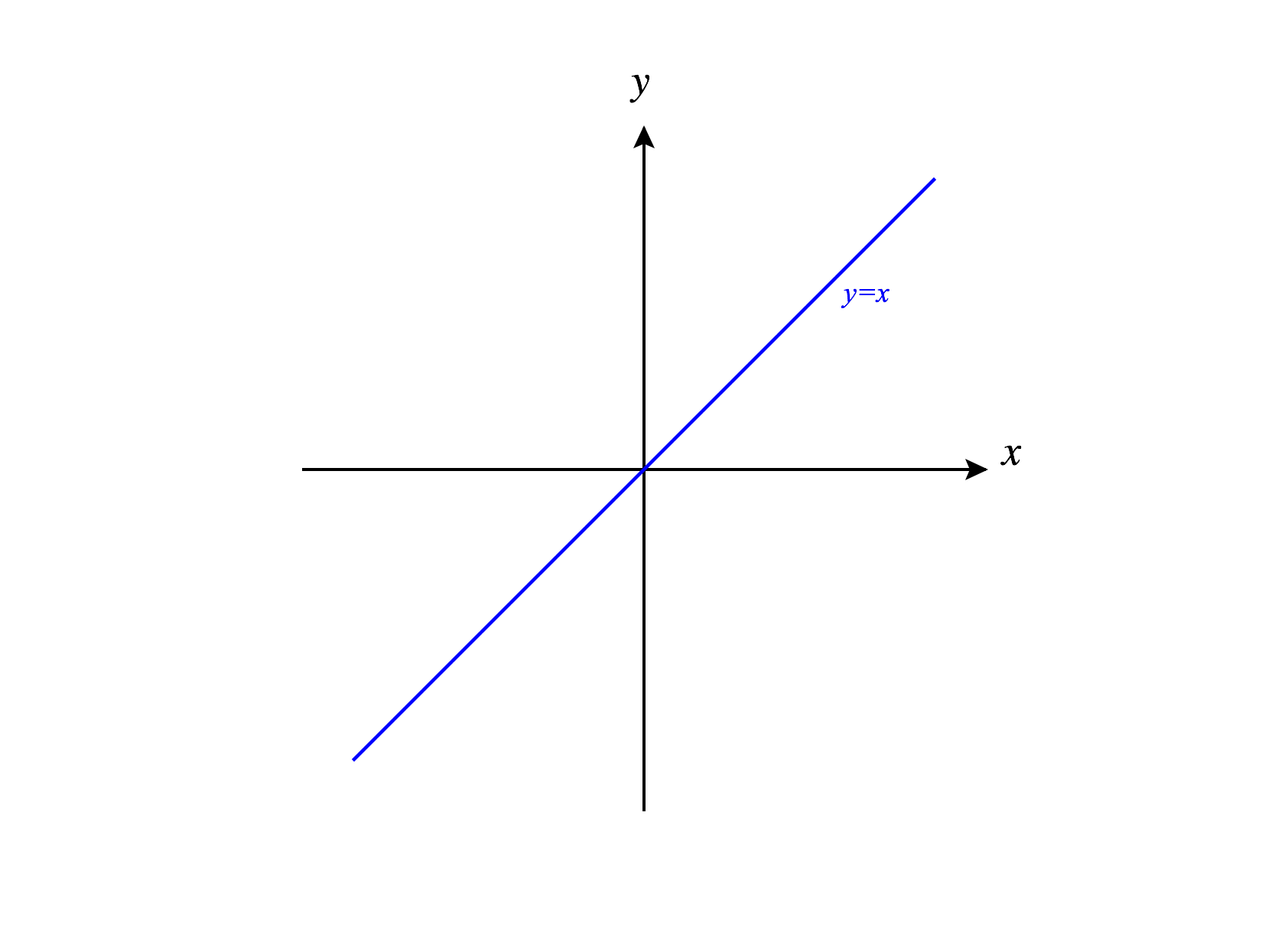
Let’s restrict our polar coordinates to and . Perhaps your first guess is to describe the line as the points such that Which shape does this describe?
Describing the line as is a reasonable first guess, as we can see that many of the points make an angle with the positive -axis. However, with the restriction that , this leaves out half of the line! In order to describe the entire line, we have a couple of options. One option would be to relax our restriction on , and allow negative values as well. This would certainly give us the whole line. If, however, we would like to keep this restriction that , we could also include points with , which will give us the other half of the line.
Which of the following describe the line in polar coordinates? Select all that work.
Recall that the relationship between Cartesian and polar coordinates:
The following equations also describe the relationship between Cartesian and polar coordinates, and they can be useful for converting between these two coordinate systems.
It’s not very clear from the equation what shape this is describing, so let’s try converting this to Cartesian coordinates, and see if we get something we recognize.
From the conversion equations above, we have that , and . Making substitutions using these facts, we have:
We now have an equation solely in terms of and , but maybe it isn’t quite recognizable yet. But if we do a bit more algebra...
Now, we can see that this is a circle of radius centered at .
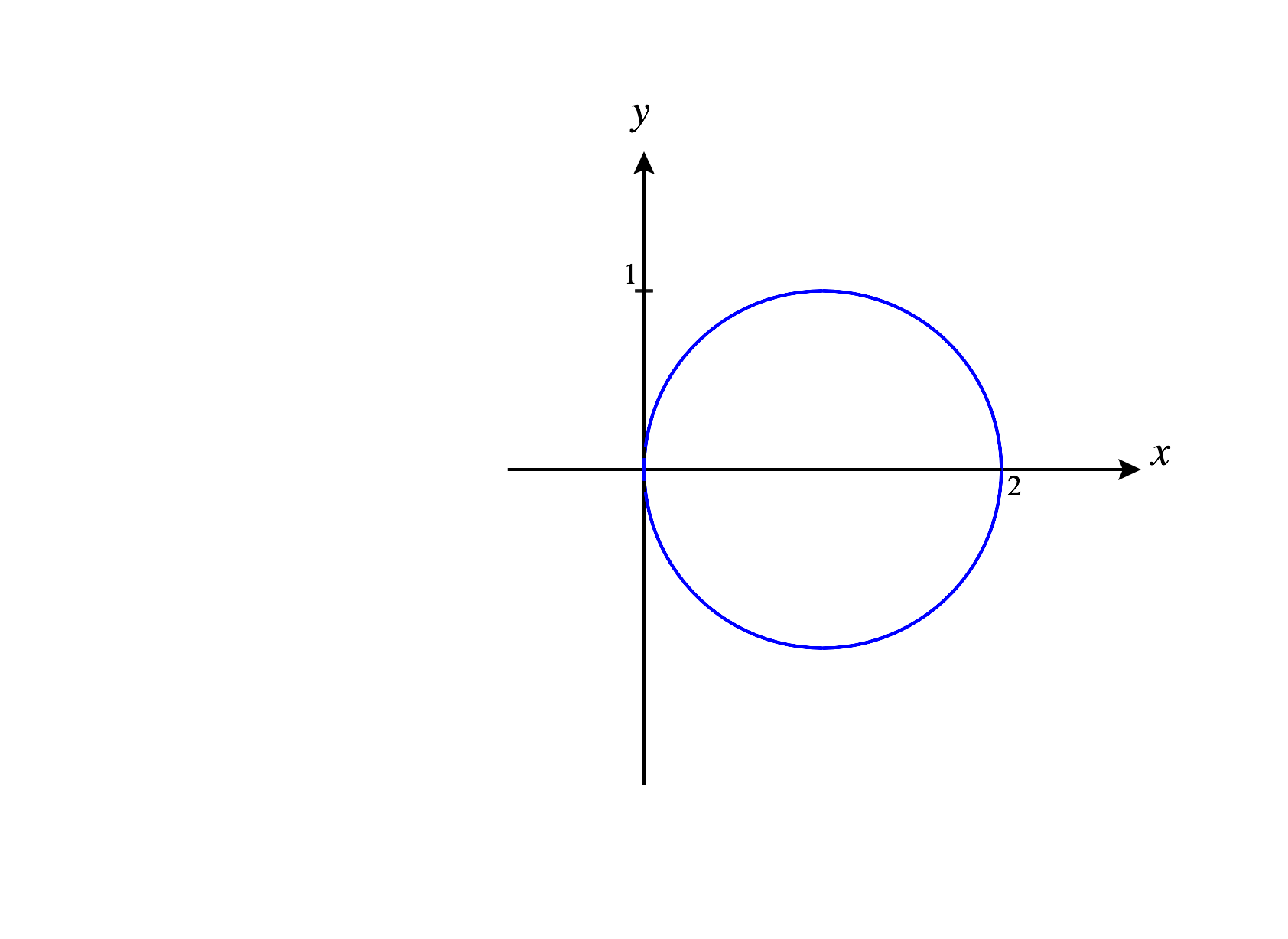
Linear change of coordinates
In Linear Algebra, we saw how different coordinate systems arose through linear change of coordinates. You may remember this referred to as “slanty space.”
When we write a point in Cartesian coordinates as , we can think of this as a linear combination of the standard basis vectors:
Of course, we can just as well write a point as a linear combination of vectors from a different basis, say and . Let’s call this basis . For example, we can write the vector as Taking the coefficients, in -coordinates, we would write this point as
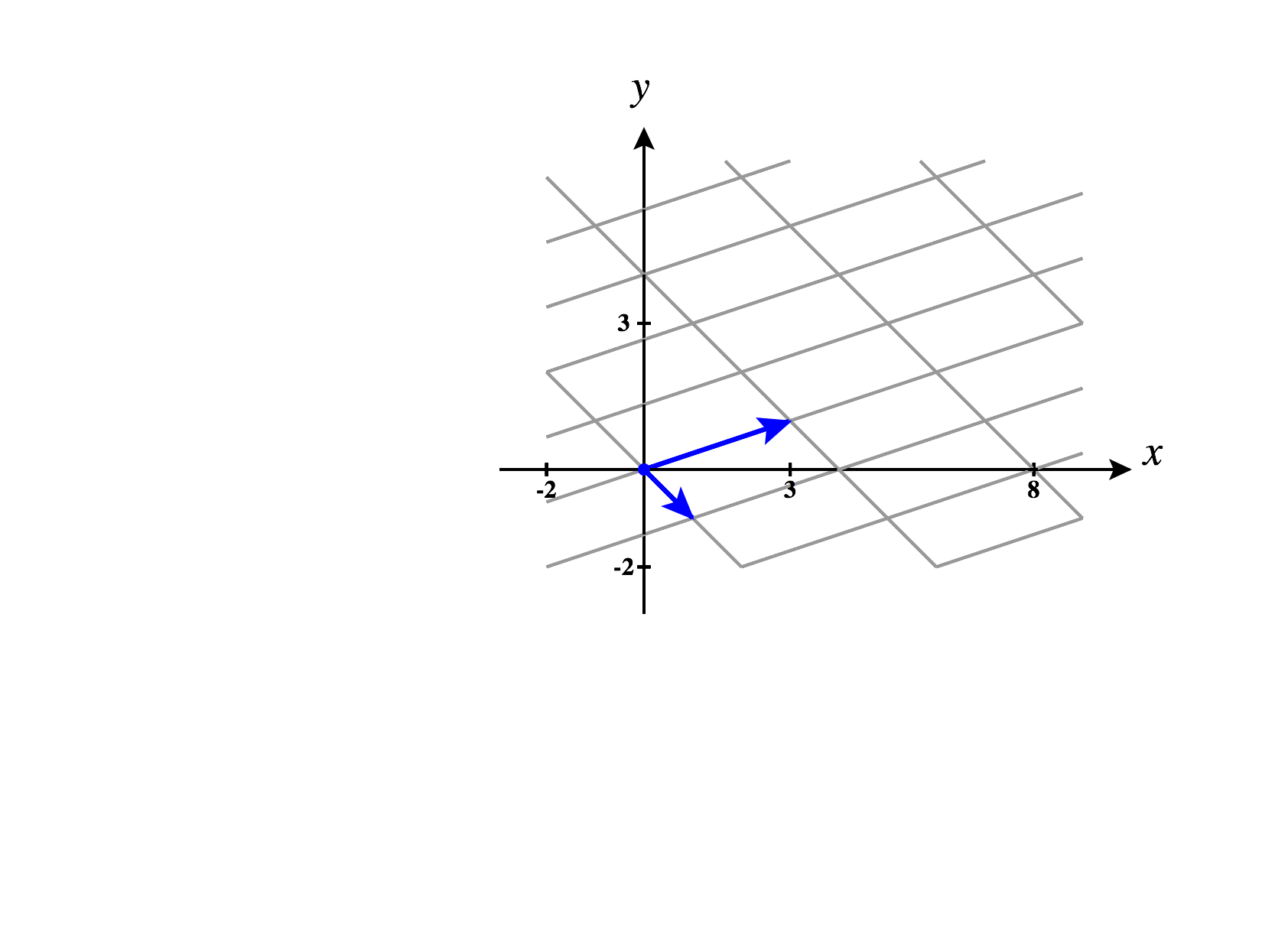
With linear changes of coordinates, it’s easy to make a mistake and forget which coordinates you’re using. Make sure to keep careful track!
Three-dimensional coordinates
In Linear Algebra, we also worked in three-dimensional Cartesian coordinates, in .
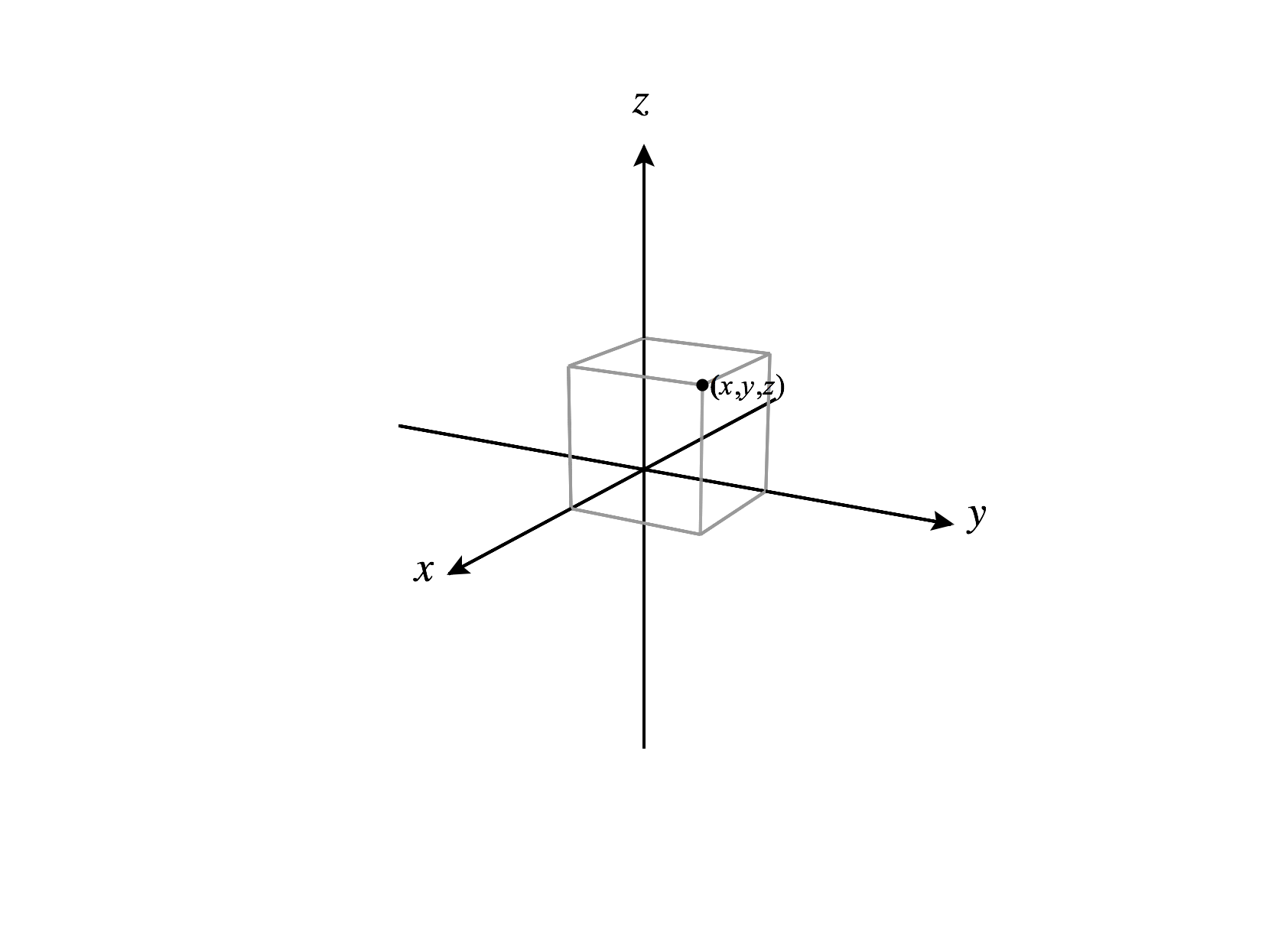
It’s important to remember that the , , and axes follow the right hand rule. That is, if you take your right hand, and point your pointer finger in the direction of the positive -axis, point your middle finger in the direction of the positive -axis, then your thumb points in the direction of the positive -axis.
Another way to say this is that if you point the fingers of your right hand in the direction of the positive -axis and curl them to point in the direction of the positive -axis, your thumb points in the direction of the positive -axis.
We’ll often refer to the coordinate planes in . These are the three planes we obtain by setting each of the coordinates to be zero.
The -plane is the set of points .
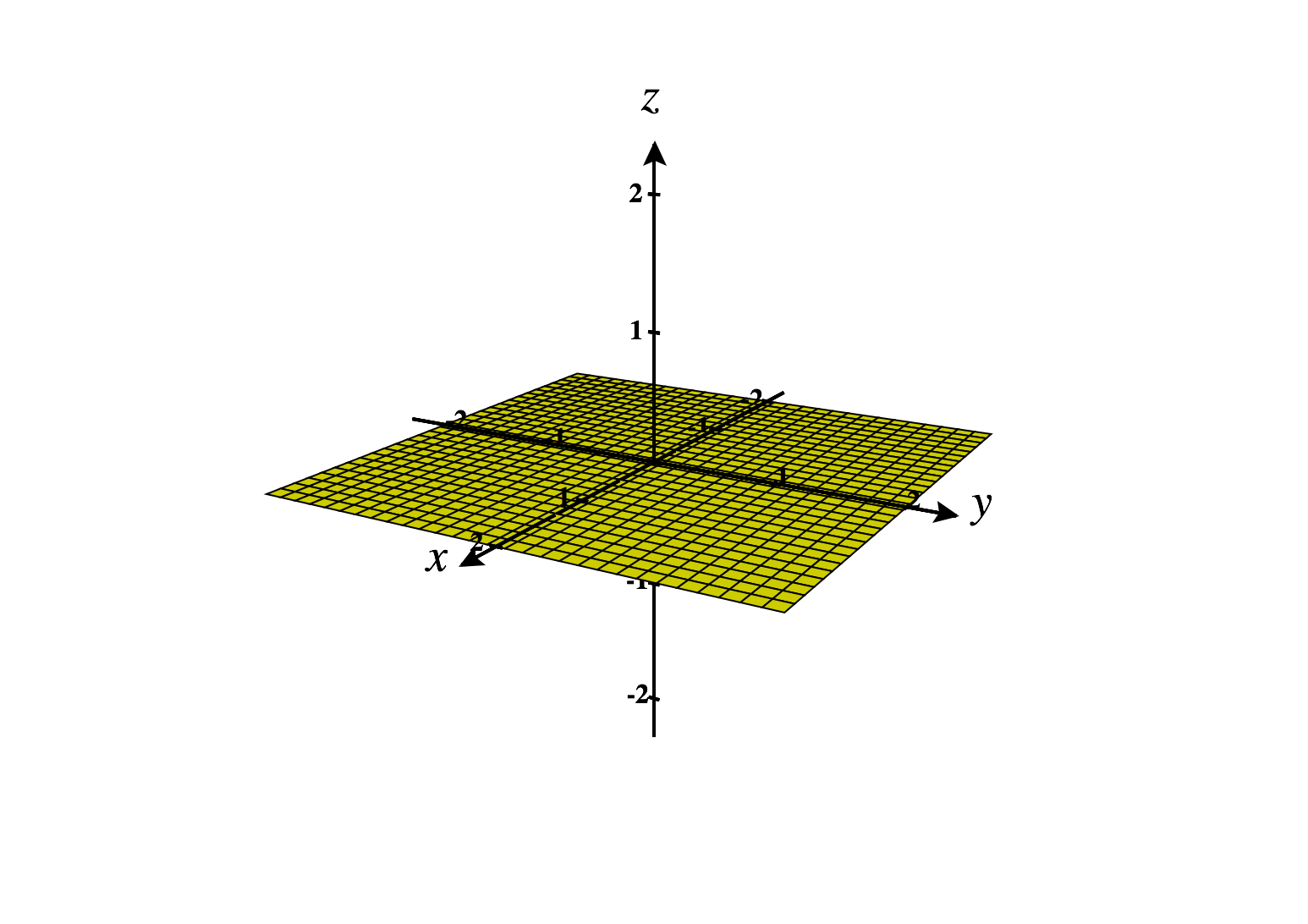
The -plane is the set of points .
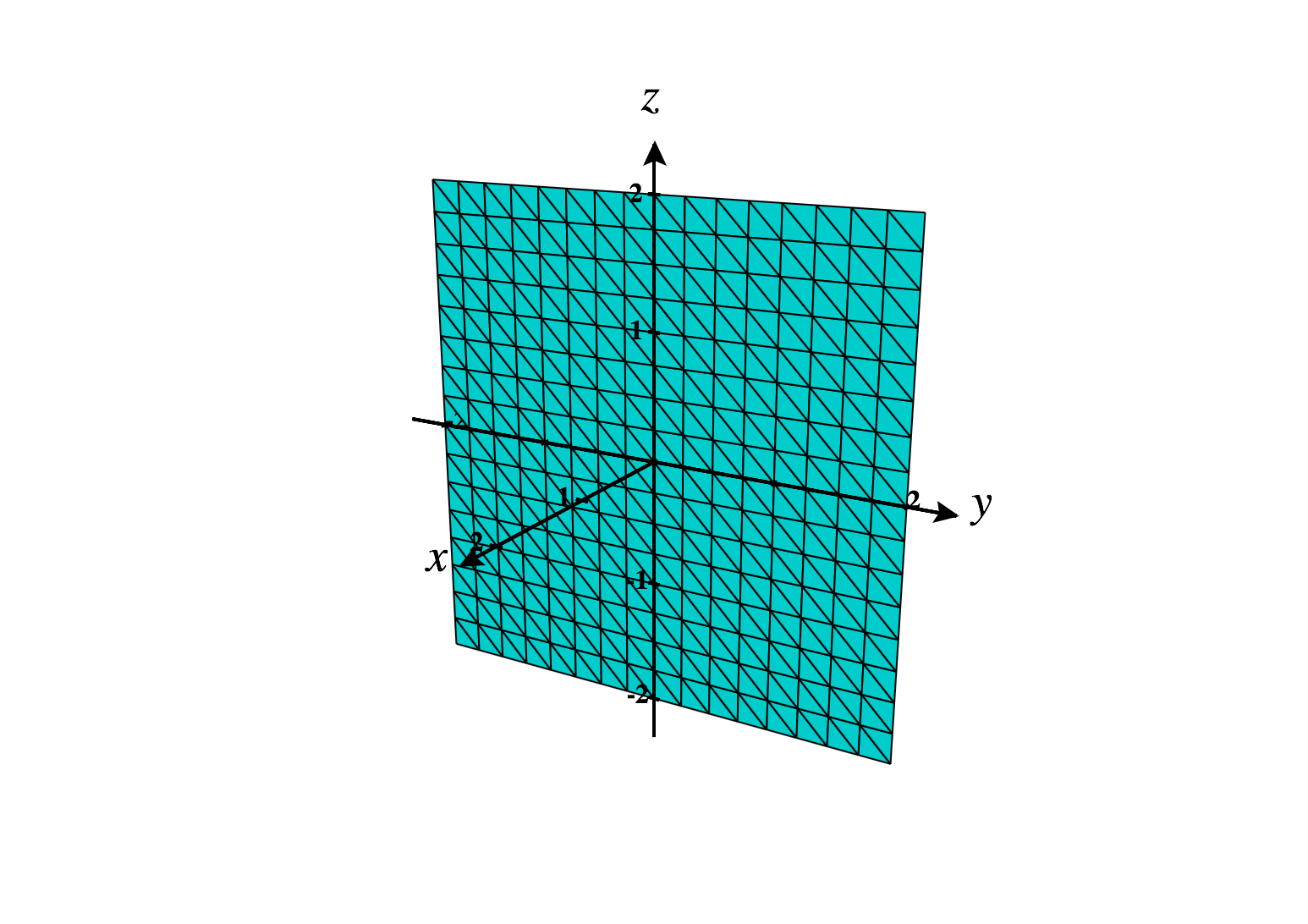
The -plane is the set of points .
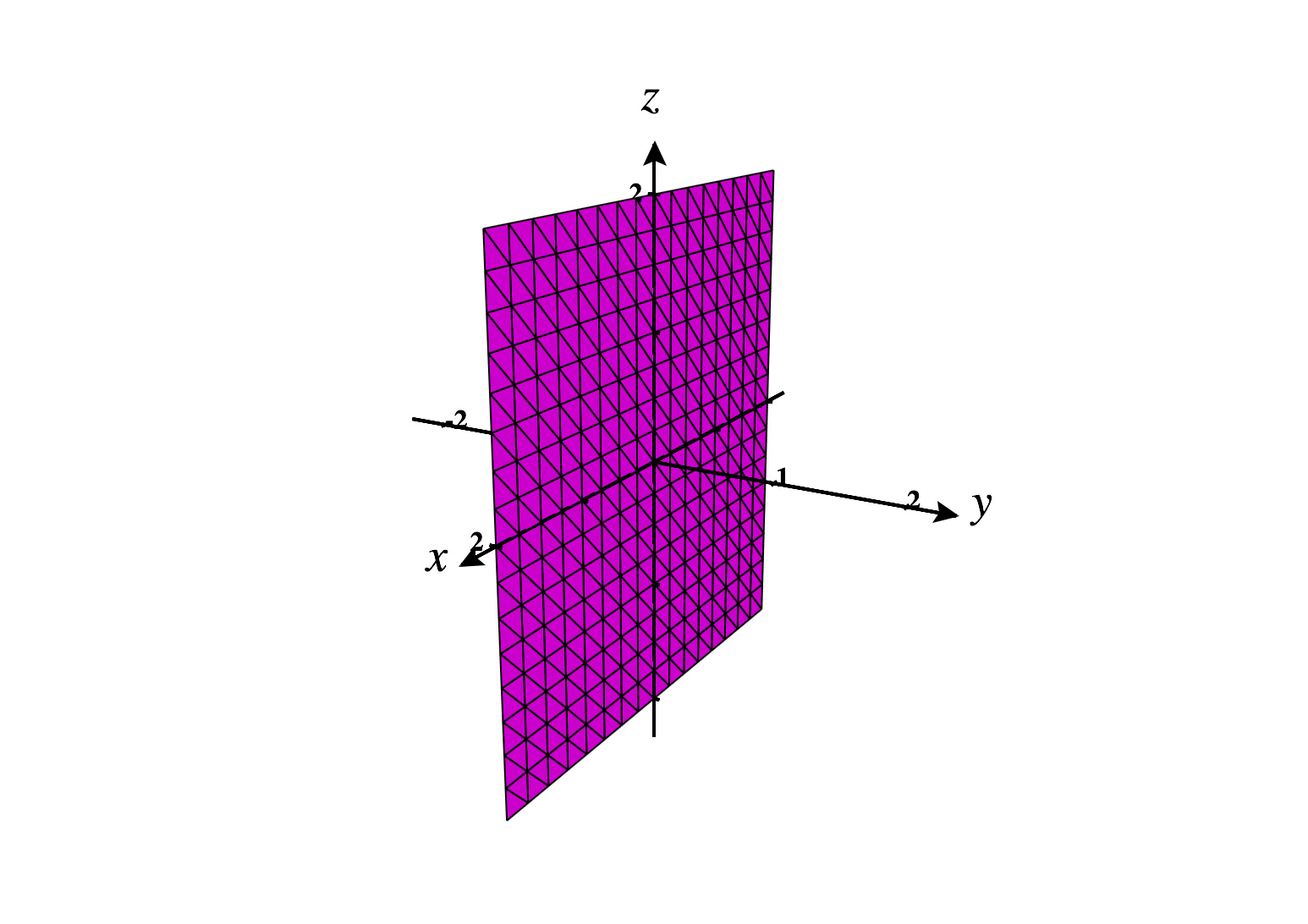
More precisely, the -plane is the set of points such that , the -plane is the set of points such that , and the -plane is the set of points such that .
Similarly to in the plane, we can describe sets of points in using equations.
We’ll soon see how we describe points in using different coordinate systems, by generalizing the idea of polar coordinate systems in a couple of different ways.
Images were generated using CalcPlot3D.
